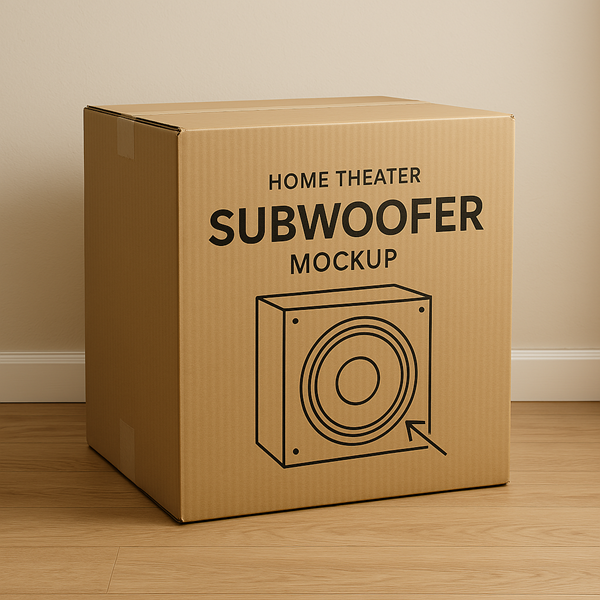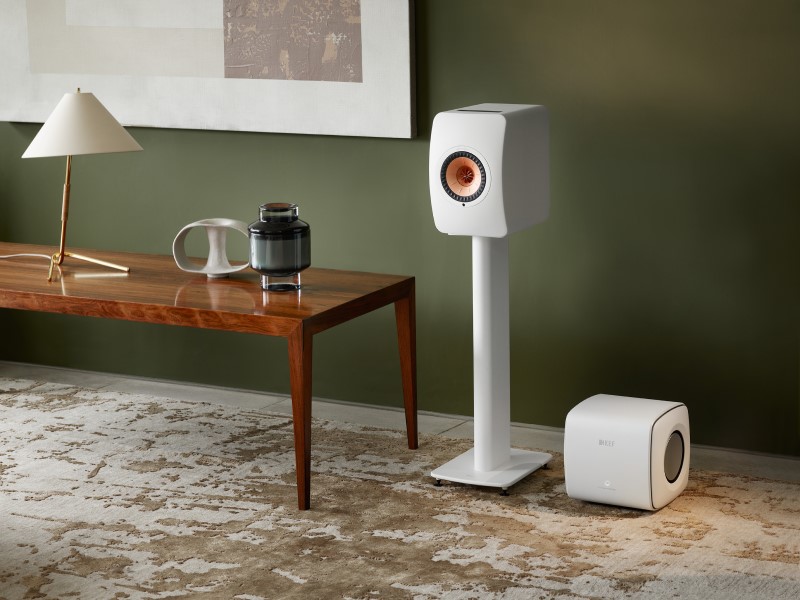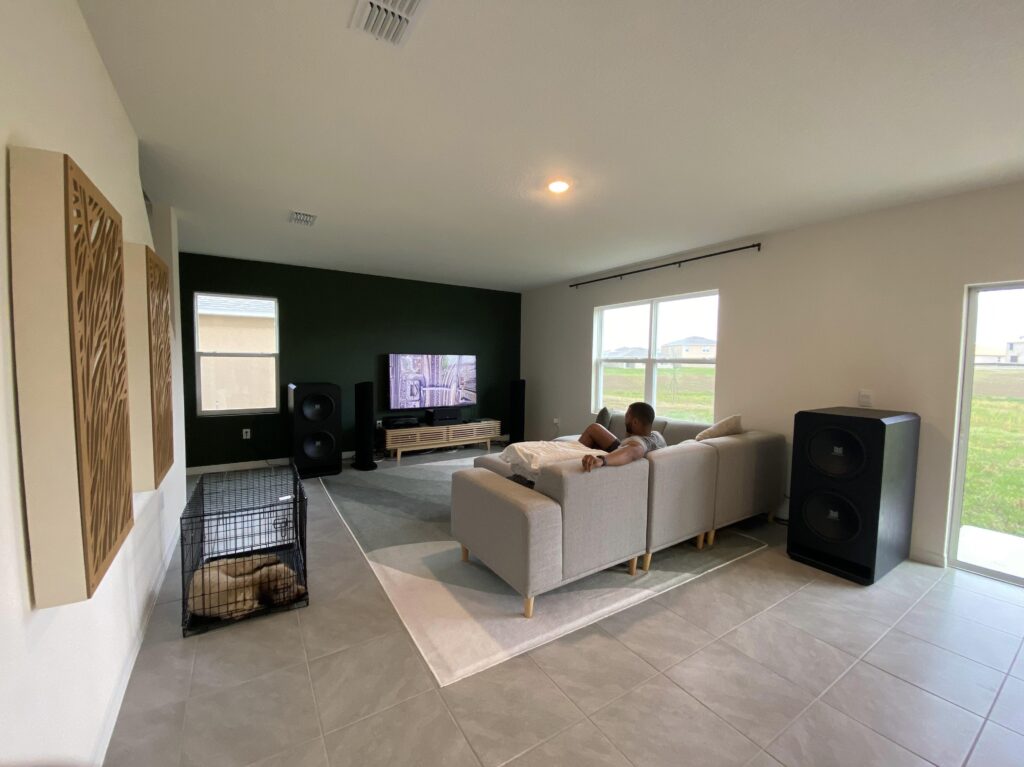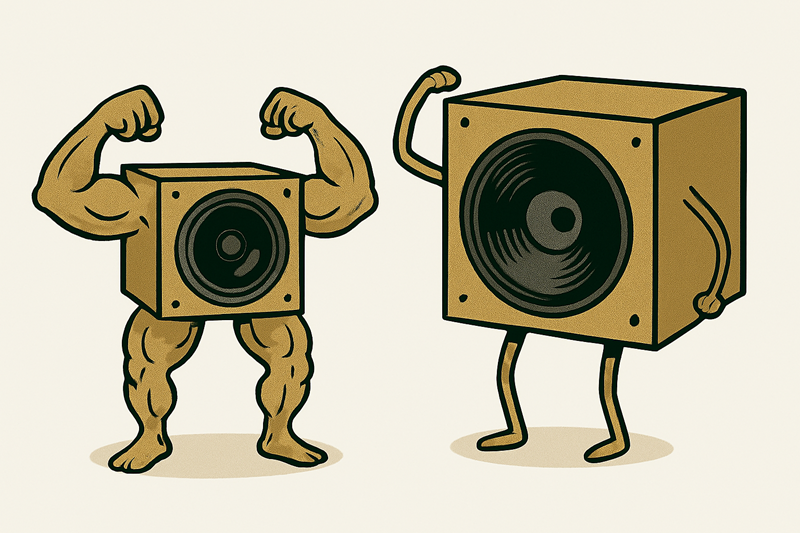Five Of The Most Common Subwoofer Shopping Mistakes And How To Avoid Them
Adding a subwoofer to your home theater can transform your experience, from merely hearing sound to feeling it. But buying the right sub isn’t always straightforward. With a mix of marketing hype, online misinformation, and misunderstandings about room acoustics, it’s easy to make costly mistakes. So, before you go out and plop down your hard-earned cash, let’s look at five of the most common subwoofer shopping mistakes and how to avoid them.
Mistake 1 – Not Building A Cardboard Box First
Before you hit “buy,” you need to know where your subwoofer is going and how big a sub you can reasonably accommodate. This is where the humble cardboard box comes in. Take the dimensions of the sub you’re considering, mock them up out of cardboard, and put it in your room. This simple step helps you avoid surprises like realizing the sub blocks a doorway, sticks out awkwardly from your entertainment unit, or just dominates your space.

This advice can translate to anything home theater-related. I wish I had mocked up my “huge” 55″ TV before I purchased it. Had I taken the time to put up a tape outline, it would have shown me how un-huge it was and would have saved me a return. Don’t let not making a mock-up be one of the most common mistakes we see made!
Mistake 2 – Believing the Internet… Without Context
The one thing that grinds my gears is when folks ask questions on the forums only to get the same tired answer, over and over. Sure, I get it, you like a certain brand and hate others. But, did you think before you spouted out what the hivemind said was the “only” right answer? Plus, why do you hate brand X so much?

It’s easy to believe “experts” on the Internet; heck, I am one of them. But ask yourself this: What experience are they drawing from? I’ve been an enthusiast for a very long time. Long enough that I have seen the rise and fall of brands over and over again. A lot of what people recommend is based on marketing and hype. Remember five years ago when Dirac Live was going to revolutionize your home theater experience?
I am telling you to do your own research. Read lots of articles and look at specs. However, nothing will beat going to a store, hearing the thing, and then making a decision. Heck, it’s even better if you can do it in your own space.
Mistake 3 – Matching Speaker Brands
I’ve heard it from newcomers: “I need it to match my XX fronts with THEIR subwoofer.” You don’t. Subwoofers are omni‑directional, operating below about 80 Hz. The ear can’t localize them, and they don’t need to match timbre.

Specialized sub brands (SVS, Rythmik, HSU, etc.) often outperform the subs from your speaker line. Build your sub strategy around performance, not brand harmony.
Do you want me to blow your mind even more? You can even match subs from different lines, if they are similar in capability or output. Yep, you can match an SVS with an HSU, or (gasp) a sealed with a ported sub! Mind blown? Just make sure you follow our setup guide.
Mistake 4 – Ignoring Room Volume (vs Room Size)
This mistake is one of the more common ones that I see. Folks will write to the internet for help, telling us that the subwoofer they put in their 12’x12′ theater sounds terrible. Ummmm…did you forget to mention that your theater is 12×12′ of a 12×30′ open concept, vaulted ceiling room. Here is a time when size and type really matters.
Bass needs to be able to fill volume, not just floor area. When you are selecting a home theater subwoofer for a large volume of space, you need more. That said, even with some large subwoofers, you may not be able to get the output you expected.

Mistake 5 – Caring Too Much About Driver Orientation or Size
It’s easy to get caught up in specs: 12″ vs 15″, down-firing vs front-firing. But in real-world use, these differences matter far less than enclosure design, amp power, and room interaction.
Front vs down-firing? It’s mostly an installation decision—do you have pets? Do you need clearance? Either design can work beautifully.

As for driver size, yes, a 15″ driver can move more air than a 10″ driver. But a well-designed 10″ sub with a strong amp and DSP can outperform a cheap 15″ in the wrong room. Bigger isn’t always better. Design, not just driver size, matters most.
Bonus Mistake: Only Buying One
Bass is a room problem. It’s not about “more boom,” it’s about even boom. One sub can sound great in one seat and awful just a few feet away. That’s because bass waves interact with room boundaries, causing peaks and nulls.
Dual subwoofers, properly placed and calibrated, can dramatically smooth bass response across your seating area. You get more consistent, even bass that feels balanced, not boomy or bloated. It’s one of the best upgrades you can make.

Our Take
Buying a subwoofer isn’t just about wattage and driver size. Five Of The Most Common Subwoofer Shopping Mistakes And How To Avoid Them can help you understand how your room, preferences, and use case affect your decision, so you get exactly what you need. Dodge these common pitfalls, and you’ll end up with bass that hits hard, sounds clean, and elevates every movie night. Especially if you get two subwoofers!



I’m glad you mentioned using cardboard to determine the size of your TV in your space. My wife and I did that when we bought our set in 2023. It actually convinced her to go with the bigger sized TV.
I feel like my job is done!